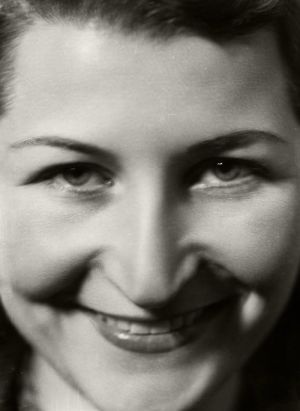Who was Maryam Şahinyan ?
Tayfun Serttaş
Maryam Şahinyan was born in 1911 at Şahinyan Konağı (Camlı Köşk), one of the most impressive civil structures in Sivas. Her grandfather, Agop Şahinyan Paşa, represented Sivas in the first Ottoman Parliament (Meclis-i Mebusan), established in 1877. Born with the social privilege inherent to a grandchild of a member of parliament, Şahinyan’s life took an unexpected turn when, as a child, she witnessed the historical events of 1915. Her family left behind the considerable real estate it owned in the region, including nearly 30 villages, five flour mills and Şahinyan Konağı, which was located in Sivas’ city center. Relocating to İstanbul via Samsun, the Şahinyans adjusted to the circumstances brought about by the Republican era, resettling in a modest apartment in Harbiye.
In 1933, Maryam’s father, Mihran Şahinyan, became a partner at the Foto Galatasaray studio in Beyoğlu - at the time managed by two Yugoslavian brothers. Typical to bourgeois children of the Imperial era, photography had been a hobby for Mihran growing up. Now, his childhood pastime would determine his family’s future, as Mihran worked at the studio to support them. At the time of Maryam’s mother, Dikranuhi Şahinyan’s, sudden death in 1936, the family’s limited finances were strained. While her brothers continued to pursue their educations, after completing primary studies at Esayan Armenian School, Maryam dropped out of Lycée Français Privé Sainte-Pulchérie during middle school to help her father at the studio. Learning the intricacies of studio photography over a couple of years, the young woman, in contrast to her siblings, developed a passion for her father’s work. By 1937, she decided to shoulder the financial burden of the family and manage the studio independently. As a woman studio photographer, Maryam was preferred by many female clients. The decision to take over the business thus proved advantageous for the studio under the conservative climate of the time. Maryam Şahinyan never married nor had children, and worked uninterruptedly in her studio, which ultimately moved across three Galatasaray locations, over her half-century-long career.
Armed with the wooden bellows camera her father originally took over from a family that immigrated from the Balkans in the aftermath of the First World War and the black-and-white sheet film she continued to use until 1985, Şahinyan, in a sense, arrested time – both against the technological advancements photography was experiencing and contemporary trends. In the end, she created an unparalleled visual coherence without compromising her technical and aesthetic principles. Throughout her professional life, Şahinyan wore a white coat and black over-sleeves to protect her clothing. She had a good command of French and Italian, in addition to Turkish and Armenian, and she used all these languages in her work. Friends with nuns, Italian sirs, and clergymen who came to İstanbul to work in different institutions, as well as the kuyrs of the Armenian Kalfayan Orphanage and Anarat Hığutyun, she provided her services pro bono to these circles throughout her life. Under Şahinyan’s leadership, Foto Galatasaray witnessed various political periods, from the 1942 imposition of Turkey’s Capital tax to the war against Cyprus in 1974, as well as the demographic and socio-cultural transformations İstanbul underwent over the course of five decades. When she retired from the studio in 1985, Şahinyan left behind a unique visual archive made up of approximately 200,000 images. She passed away at her home on Hanımefendi Sokak in Şişli in 1996 and is buried in Şişli Armenian Cemetery.

Maryam Şahinyan (1911, Sivas - 1996, İstanbul)

